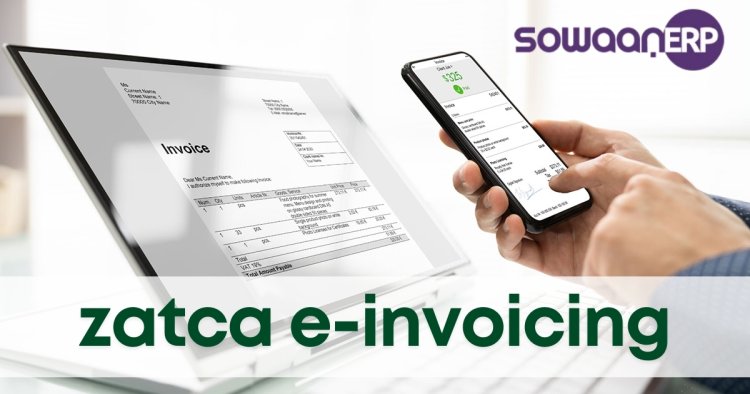What is ZATCA E-Invoicing and How Does It Work in Saudi Arabia
ZATCA (Zakat, Tax, and Customs Authority) e-invoicing is a mandatory digital invoicing system introduced in Saudi Arabia to ensure tax compliance, reduce fraud, and enhance transparency.

ZATCA (Zakat, Tax, and Customs Authority) e-invoicing is a mandatory digital invoicing system introduced in Saudi Arabia to ensure tax compliance, reduce fraud, and enhance transparency. Known as FATOORA, the e-invoicing system requires businesses to generate, store, and integrate electronic invoices in compliance with ZATCA regulations. It was introduced in two phases: the Generation Phase (December 4, 2021) and the Integration Phase (January 1, 2023, in stages).
How Does ZATCA E-Invoicing Work?
E-invoicing replaces traditional paper invoices with structured digital invoices that contain all required tax details in a machine-readable format (XML or PDF/A-3 with embedded XML). These invoices are validated by ZATCA and cannot be altered once issued.
Phases of ZATCA E-Invoicing Implementation
-
Phase 1 – Generation Phase (From December 4, 2021)
- Businesses must generate invoices electronically.
- Invoices must be structured (XML or PDF/A-3 format).
- Manual or handwritten invoices are prohibited.
- Invoices must include a QR code (for simplified invoices), buyer’s VAT number (for B2B transactions), and other required fields.
-
Phase 2 – Integration Phase (From January 1, 2023, in stages)
- Businesses must integrate their e-invoicing system with ZATCA’s platform.
- Invoices must be validated and reported to ZATCA in real-time.
- Cryptographic stamps and Unique Invoice Identifiers (UUIDs) are required.
- ZATCA’s system will verify and store invoices securely.
Types of E-Invoices Under ZATCA Regulations
-
Standard Tax Invoice (for B2B transactions)
- Used for transactions between VAT-registered businesses.
- Requires buyer’s VAT number and structured invoice format.
- Must be reported to ZATCA for verification.
-
Simplified Tax Invoice (for B2C transactions)
- Used for transactions with individual consumers.
- Includes a QR code for quick verification.
- Businesses must submit reports periodically to ZATCA.
Benefits of ZATCA E-Invoicing
-
Improved Tax Compliance
- Ensures accurate VAT reporting and prevents tax evasion.
-
Enhanced Transparency and Security
- Digital invoices are encrypted and tamper-proof, reducing fraud.
-
Faster VAT Refunds and Audits
- Since invoices are stored digitally, VAT returns and refunds are processed more efficiently.
-
Streamlined Business Operations
- Reduces paperwork, minimizes errors, and speeds up invoice generation and processing.
-
Cost Savings
- Eliminates the need for physical invoices, reducing administrative costs and storage expenses.
Who Must Comply with ZATCA E-Invoicing?
- All VAT-registered businesses in Saudi Arabia.
- Third-party entities issuing invoices on behalf of VAT-registered businesses.
- Government and semi-government entities conducting taxable transactions.
Challenges of ZATCA E-Invoicing Implementation
-
Technology Upgrade Costs
- Businesses need to upgrade their ERP, POS, and accounting systems to comply with ZATCA requirements.
-
System Integration Complexity
- The integration phase requires real-time connectivity with ZATCA’s invoicing portal.
-
Training and Change Management
- Employees need training to adopt the new invoicing process effectively.
Conclusion
ZATCA e-invoicing is a crucial part of Saudi Arabia’s Vision 2030, aiming to digitize tax processes and enhance business efficiency. Although businesses may face challenges in system integration and compliance, the long-term benefits—such as improved tax compliance, cost reduction, and operational efficiency—make it a significant advancement in the country’s digital transformation.
What's Your Reaction?
















